| When you hear the word nutcracker you
think of the wood turned nutcracker from Germany—the one you see in
nearly every store at Christmas time—the one whose body parts are
turned on a lathe--the one with the big teeth and grim expression.
But there are many more kinds of nut cracking devices, and
many different materials used to make them.
So let’s investigate……. |
| |
|
STONE
|
|
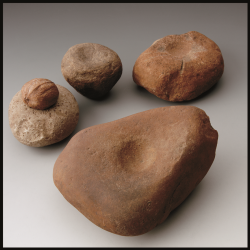 |
Early peoples broke nutshells with rocks or
“nutting stones”. They
would place the nut in a pitted stone to hold it in place and strike
it with another stone called a “hammer stone”.
In the autumn they would camp near the nut trees so they
could gather the nuts as they fell before the squirrels or other
animals would get them. |
| |
|
WOOD
|
|
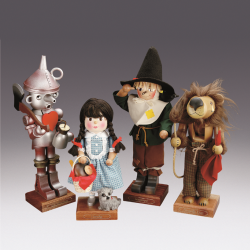 |
Linden
is the wood must often used to make the wooden toy soldier
nutcracker as it is easy to turn on the lathe, but birch, beech and
other woods are also used. Softer
woods such as pine or fir are not as durable and it takes a strong
wood to make a nutcracker! For
turning the wood on a lathe, it must have an even and clear grain.
It must not have knots as that will dull the cutting blade. |
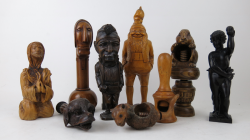 |
Boxwood
is the favorite wood of carvers.
It is a golden color, easy to carve, and very durable.
Nutcrackers carved 400 to 500 years ago are still beautiful
today. Other woods used
by carvers are beech, maple, walnut, linden, rosewood or fruitwoods.
There are some nutcrackers carved of ebony, a wood so hard it
will not float in water. |
| |
|
METALS
|
|
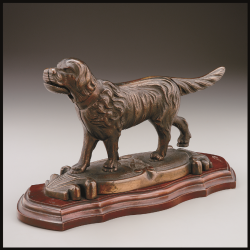 |
Bronze
is an alloy of copper and tin and is one of the oldest metals used
for nutcrackers. A
museum in Taren, Italy, displays a bronze nutcracker shaped as a
pair of hands that was created over 2500 years ago.
The Leavenworth Nutcracker Museum displays a bronze
nutcracker from Roman times. |
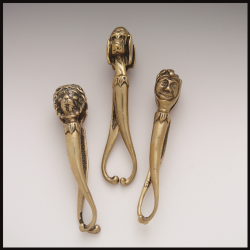 |
Brass,
an alloy of zinc and copper,
has been used t make nutcrackers since the 15th
century and you can tell brass items by their beautiful golden
color. You can still
find many nutcrackers that were made in England In the 18th
and 19th centuries when
Birmingham was the center for brass production. |
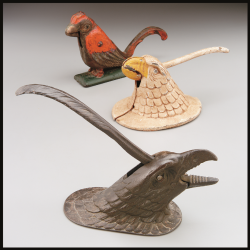 |
Iron
nutcrackers have been made for many centuries.
The nutcrackers in this picture were made by pouring hot
liquid iron into a mold. These are called “cast iron”.
Other nutcrackers may be “hand wrought” which means the metal
is manually beaten into the desired shape.
A man working with iron is
called a blacksmith. |
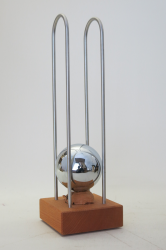 |
Steel
is iron that has most of its impurities removed and has a high
carbon content which makes it much stronger than iron.
Stainless steel has chromium added so it will not rust.
You will see the shine on these nutcrackers pictured. |
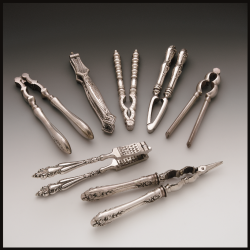 |
Silver
is too soft a metal to
withstand the pressure needed to crack a nut so there are very few
of them made of solid silver.
However there are many iron and brass nutcrackers that are
coated or “plated” with silver.
Other nutcrackers are plated with nickel or chrome to give
the appearance of silver. |
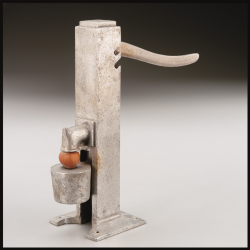 |
Aluminum
is a newer metal that not developed until the 19th
century. It is a
light-weight metal that is strong, easily worked, resists corrosion,
and has a pleasing silver-white color.
It is used in many different ways from the foil we use in the
kitchen to the bodies of airplanes.
And yes, you can find many nutcrackers made out of aluminum. |
| |
|
IVORY
|
|
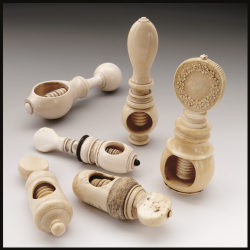 |
Ivory
is not a strong material so it is usually used for screw nutcrackers
where pressure is applied more gently.
Most ivory nutcrackers are from elephant tusks, but tusks
from walrus and narwhal are also made.
Many lever table nutcrackers use ivory to decorate the
handles, and ivory trim is sometimes used on carved nutcrackers. |
| |
|
PORCELAIN
|
|
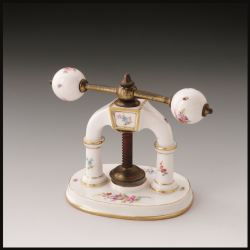 |
Although many table nutcrackers are said to be made
of porcelain, only the base and frame are porcelain with actual
working parts being made of metal.
Several porcelain factories made these nutcrackers during the
Victorian times, including the famous Meissen workshops. |
| |
|
MODERN MATERIALS
|
|
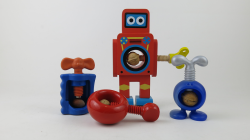 |
Plastic
is the term generally used for the new synthetic materials.
They are strong, light-weight, and can be made in many
attractive colors.
Several manufacturers are making nutcrackers especially for children
in interesting designs and bold colors. |
 735
Front Street
735
Front Street












